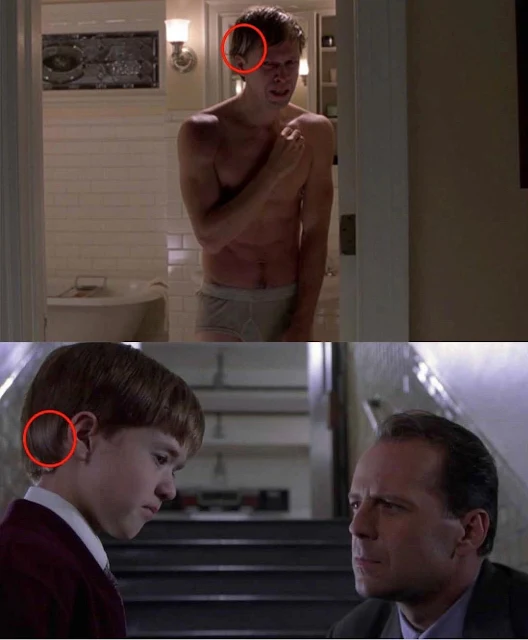Among the numerous elements that contribute to the film's deep narrative, one particularly intriguing aspect is the portrayal of Dr. Malcolm Crowe's two patients, Cole Sear and Vincent Gray.
Both characters are presented with a distinctive physical trait: a wisp of white hair.
This feature is not merely a stylistic choice but serves as a symbolic connection between the two characters and the burdens they bear as individuals who can see and communicate with the dead.
The Symbolism of White Hair
Representation of Trauma and Stress: In literature and cinema, white hair often symbolizes the impact of extreme stress or trauma. The phenomenon of hair turning white due to severe psychological distress is not just a myth but has some basis in reality, known as Marie Antoinette Syndrome. This condition is said to occur when someone experiences a significant emotional shock, leading to a rapid whitening of the hair.
Visual Marker of the Seers: The wisps of white hair in both Vincent and Cole serve as a visual marker, identifying them as "seers" – individuals with the ability to perceive supernatural entities. This shared trait subtly connects the two characters, hinting at their common abilities and the challenges those abilities bring.
Age and Wisdom Beyond Years: Traditionally, white hair is associated with age and wisdom. In the context of "The Sixth Sense," it could symbolize that both Vincent and Cole carry a maturity and understanding beyond their years, a direct result of their unique and burdensome gift.
Directorial Intent and Thematic Resonance
M. Night Shyamalan is known for his meticulous attention to detail and symbolism in his films. The choice to give both characters a similar physical trait likely serves multiple purposes:
Establishing a Connection:
Foreshadowing and Narrative Depth:
Enhancing Character Development:
The film is well layered symbolism that adds depth to its narrative. Notably, the film employs the color red and temperature changes as recurring motifs to signify the presence of the supernatural. The color red, carefully used throughout the movie, appears in contexts associated with the world of the dead and the unseen.- This deliberate choice serves as a visual clue to the audience, indicating moments where the supernatural is intruding into the physical world (use of color became Shyamalan's director trade mark, see The Village and Unbreakable).
Similarly, temperature fluctuations, particularly the chilling cold, are used to signal the presence of ghosts. This temperature change is often accompanied by a shift in the characters' behaviors and the atmosphere of the scene, enhancing the eerie and suspenseful mood of the film. These symbolic elements, along with the distinctive white hair of Dr. Malcolm Crowe's patients, showcase the film's rich and intricate script, where every detail contributes to the overarching themes and emotional resonance of the story.
In "The Sixth Sense," the use of a wisp of white hair in the portrayal of Vincent Gray and Cole Sear is a masterful example of visual storytelling. It serves as a symbolic thread that ties their characters together, representing the psychological and emotional toll of their extraordinary abilities. This detail, though small, contributes significantly to the film's depth, enriching the narrative and offering viewers a subtle yet poignant insight into the lives of these two characters.















